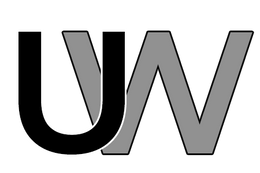
Focus on what moves the needle, cut the rest!
In today’s noisy, hyper-connected world, productivity is less about doing more and more about doing the right things. Without a system for ruthless prioritization, it’s easy to get trapped in a cycle of busywork—checking boxes without making real progress. The truth is, not all tasks are created equal, and if you want meaningful results, you have to protect your time and energy like they’re your most valuable assets.
Here’s how to practice ruthless prioritization and ensure your workday is dedicated to what truly matters.
1. Identify Your “Big 3” Daily Tasks
The heart of ruthless prioritization is knowing what deserves your attention most. Each morning—or even better, the night before—write down the three most impactful actions you can take the next day. These aren’t random items from your to-do list; they’re high-leverage tasks directly tied to your biggest goals.
A good litmus test: If you completed nothing else today but these three things, would it still feel like a productive day? If the answer is yes, you’ve identified your Big 3.
Pro tip: Keep your list short and crystal clear—vague tasks drain mental energy.
2. Tackle Them Before Anything Else
Morning hours are often when you have the highest mental energy and focus. If you want to give your Big 3 the attention they deserve, work on them before answering emails, taking meetings, or dealing with small fires.
By front-loading your day with high-value work, you ensure the urgent but unimportant doesn’t swallow your best thinking time. This is how you stop reacting to the day and start controlling it.
Remember: Your Big 3 should be non-negotiable. Everything else waits.
3. Cut or Delegate Low-Impact Tasks
Most people waste hours every week on tasks that don’t move them toward their goals. These can be busywork, repetitive admin tasks, or low-value meetings. Ruthless prioritization means you actively cut or delegate these whenever possible.
Ask yourself:
-
If I stopped doing this entirely, what would happen?
-
Is this something only I can do?
If the answer is no, find a way to outsource it or drop it completely. The freed-up time is better spent on your high-impact priorities.
4. Use the 80/20 Rule to Focus Your Efforts
The Pareto Principle, or 80/20 rule, says that 80% of your results come from 20% of your efforts. Identify that critical 20% in your own work—the clients, projects, and actions that create the most results—and focus relentlessly on them.
For example, if a certain type of project brings in the most revenue, make it a central focus of your day. If certain clients give you the best opportunities, prioritize their needs over others. This is how you shift from “busy” to “profitable” in both time and results.
5. Time-Block for Laser Focus
Once you’ve chosen your priorities, guard them with time blocks—scheduled, uninterrupted chunks of work time. Turn off notifications, close your inbox, and signal to others that you’re unavailable.
Think of these as meetings with yourself for your most important work. Treat them with the same respect you’d treat a client meeting—no rescheduling, no skipping. Over time, this habit compounds into deep, meaningful progress.
6. End Your Day With a Priority Review
Ruthless prioritization isn’t a one-and-done decision—it’s a daily discipline. At the end of each day, take five minutes to:
-
Review what you accomplished
-
Check if your Big 3 were completed
-
Choose your next day’s priorities
This keeps your focus sharp and prevents you from starting the next day in reaction mode. It’s also a chance to notice patterns—like which tasks consistently get pushed aside—so you can address them head-on.
Final Thoughts: Protect Your Focus Like It’s Gold
Ruthless prioritization isn’t about being cold or inflexible—it’s about aligning your daily actions with the outcomes you care about most. It’s about owning your time instead of letting others control it.
When you commit to identifying your Big 3, tackling them first, cutting the low-impact fluff, and reviewing daily, you’ll find you can achieve more in fewer hours—and with far less stress.
In the end, the question isn’t, “How much did I do today?” but rather, “Did I do the right things today?” When the answer is yes, you know you’re winning.

Leave a comment